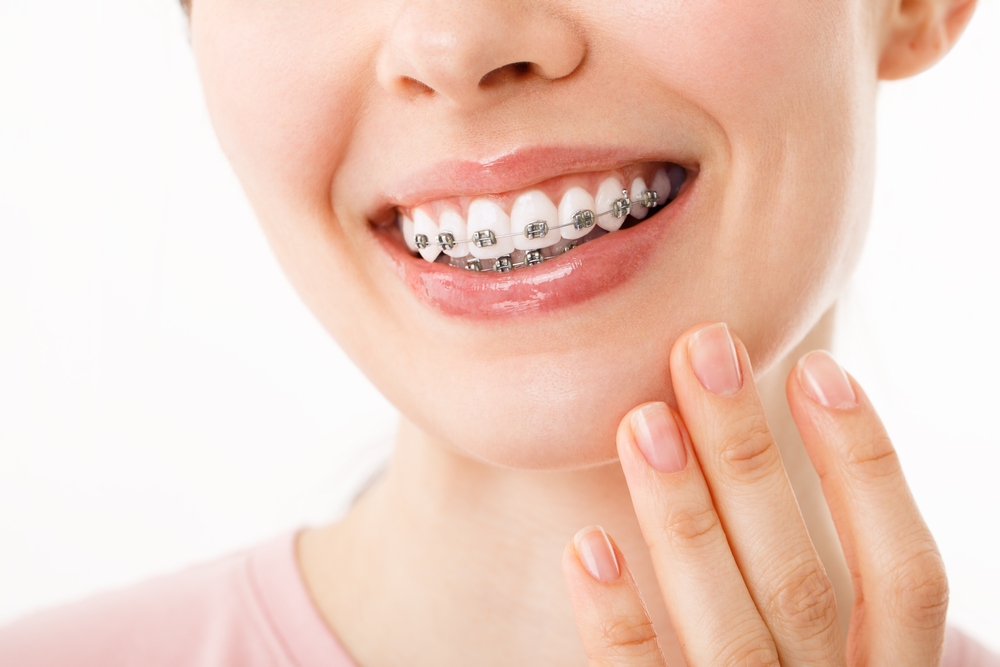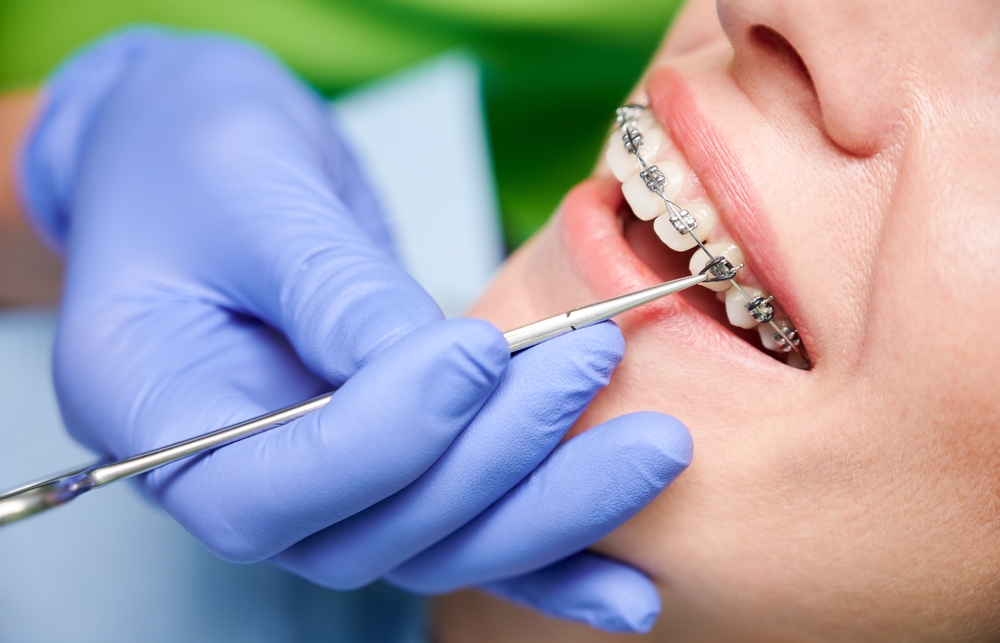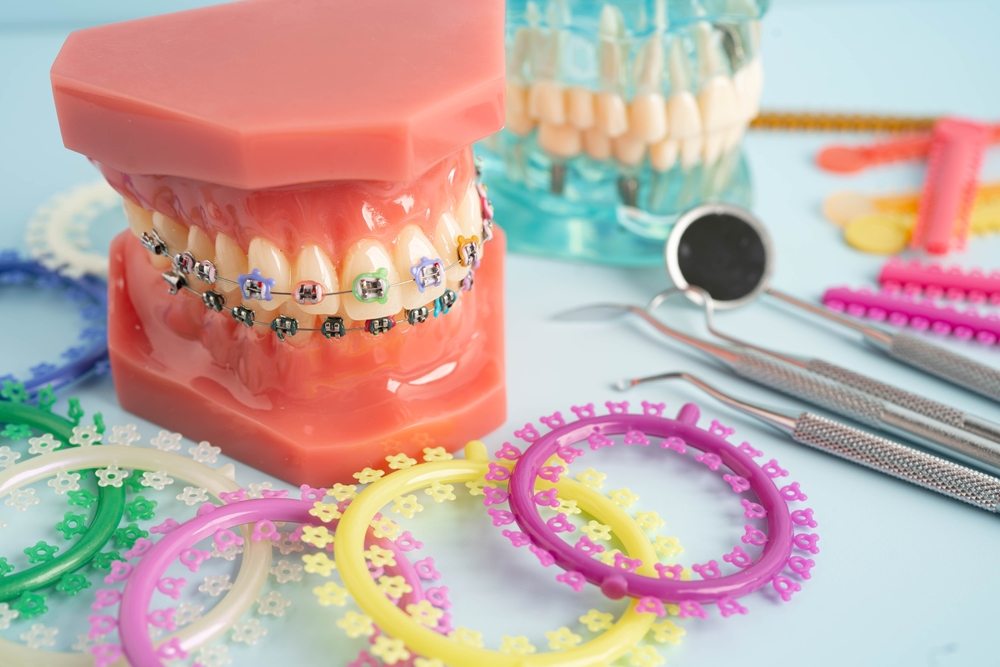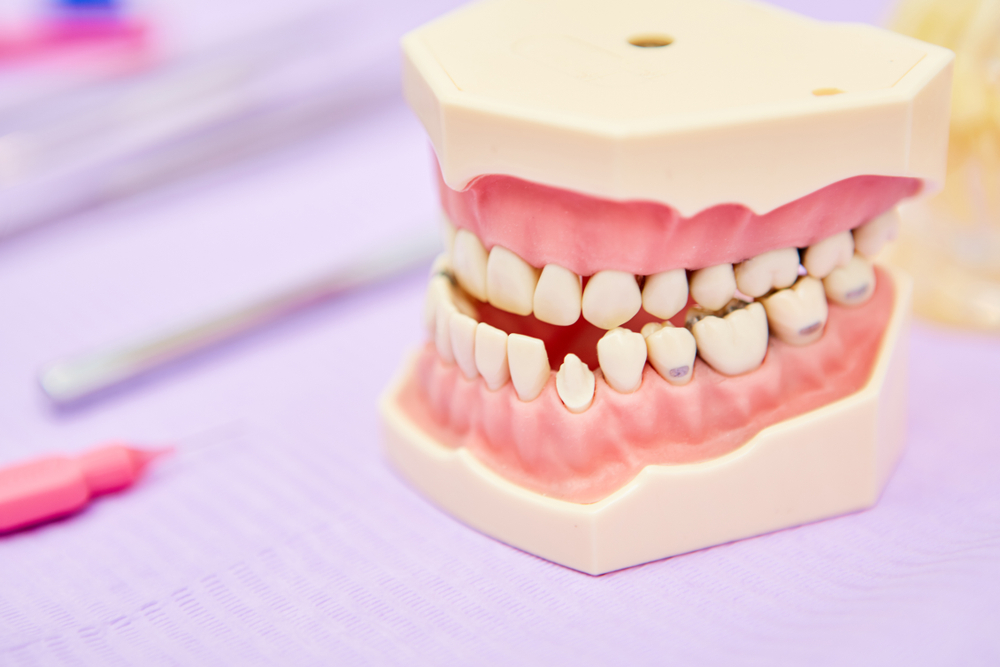Orthodontics isn’t just about straightening teeth; it involves a complex biological process that impacts the very structure of the jaw. A key element in this process is alveolar bone remodeling, which occurs in response to orthodontic forces applied to the teeth. Understanding how these forces influence bone remodeling is crucial to grasping the science behind orthodontic treatment. At Davis Family Orthodontics, Dr. Laura Davis leverages this knowledge to deliver effective and precise orthodontic care to patients in Lawrenceville, Morrow, Stone Mountain, and Loganville, GA.
The Science Behind Orthodontic Forces
Orthodontic treatment involves the application of gentle, consistent pressure to teeth using devices like braces or aligners. This pressure triggers a biological response that affects the surrounding alveolar bone—the bone that houses the tooth sockets. The applied force sets off a chain reaction of cellular activity within the bone, leading to remodeling that allows teeth to move into their desired positions.
The process of bone remodeling is not merely mechanical; it’s a dynamic and complex interaction between mechanical forces and biological responses. It involves the coordinated activities of various cells, including osteoclasts and osteoblasts, which break down and rebuild bone tissue.
What is Alveolar Bone Remodeling?
Alveolar bone remodeling is a natural process that allows the bone to adapt to changes in pressure and stress. It is a continuous cycle of bone resorption and formation. During orthodontic treatment, the pressure applied to the teeth stimulates the alveolar bone to undergo remodeling to accommodate tooth movement. This process consists of two main phases:
- Bone Resorption: When force is applied to a tooth, pressure is exerted on one side of the alveolar bone. This stimulates osteoclasts—cells responsible for breaking down bone tissue—to resorb the bone on the pressure side, creating space for the tooth to move.
- Bone Formation: Simultaneously, tension on the opposite side of the tooth stimulates osteoblasts, which are responsible for forming new bone. These cells fill in the space left behind as the tooth moves, ensuring the stability of the new tooth position.
This coordinated effort between osteoclasts and osteoblasts enables orthodontists to gradually and safely guide teeth into better alignment.
The Role of Orthodontic Appliances
Different types of orthodontic appliances exert varying levels of force on teeth, influencing the rate and efficiency of alveolar bone remodeling. Here are some common orthodontic appliances and their impact on bone remodeling:
Braces
Traditional braces use brackets and wires to apply controlled forces to the teeth. These forces are continuously adjusted during routine orthodontic visits, allowing for gradual tooth movement and bone remodeling. The consistent pressure from braces encourages a steady pace of bone resorption and formation, leading to long-lasting results.
Clear Aligners (Invisalign)
Clear aligners, such as Invisalign, use a series of removable trays to apply pressure to the teeth. Each set of aligners is custom-made to exert a specific amount of force on different areas of the teeth, prompting alveolar bone remodeling. Because aligners are changed every one to two weeks, they deliver incremental forces that facilitate gradual and precise tooth movement.
Expanders and Space Maintainers
These appliances are often used in children to guide jaw development and make room for permanent teeth. By exerting gentle forces over a longer period, expanders and space maintainers encourage bone remodeling in the jaw, allowing for optimal tooth eruption and alignment.
Cellular Mechanisms of Alveolar Bone Remodeling
The biological process of bone remodeling is highly regulated at the cellular level. Here’s a closer look at the main cells involved:
- Osteoclasts: These are specialized cells responsible for bone resorption. They break down the bone matrix by secreting acids and enzymes, creating space for tooth movement. When orthodontic forces are applied, osteoclasts become active on the pressure side of the bone, ensuring that the alveolar bone can accommodate the shifting tooth.
- Osteoblasts: These cells are responsible for bone formation. They produce the proteins and minerals necessary to rebuild the bone matrix. Osteoblasts are activated on the tension side of the bone, where they fill in the space left behind by the moving tooth, providing stability to the new position.
The balance between osteoclast and osteoblast activity is essential for successful orthodontic treatment. If bone resorption occurs too quickly or bone formation lags, it can lead to instability or root damage. This is why orthodontic treatment is a gradual process, allowing the alveolar bone to adapt safely.
Factors Influencing Alveolar Bone Remodeling
Several factors can impact the efficiency of bone remodeling during orthodontic treatment. These factors are considered during treatment planning to ensure optimal results:
Age
Younger patients typically experience faster bone remodeling due to the active growth phase of their bones. This makes children and adolescents excellent candidates for early orthodontic interventions. In adults, bone remodeling still occurs, but at a slower pace, requiring careful force adjustments for effective results.
Magnitude and Duration of Force
The amount and direction of force applied to the teeth are critical. Too much force can damage the periodontal ligament and cause root resorption, while too little force may not effectively stimulate bone remodeling. Orthodontists like Dr. Laura Davis carefully calibrate the force to achieve the desired tooth movement without compromising the health of the bone and teeth.
Biological Response
Each individual’s biological response to orthodontic forces varies. Some patients may experience rapid bone remodeling, while others may require longer treatment periods. Genetics, hormonal factors, and overall health can all play a role in how the alveolar bone responds to orthodontic pressure.
The Impact of Orthodontic Treatment on Alveolar Bone Health
Properly managed orthodontic treatment can have a positive impact on alveolar bone health. By achieving a well-aligned bite and balanced forces, orthodontics can improve the overall function of the jaw, reduce the risk of periodontal disease, and support long-term dental stability. However, it is crucial to follow your orthodontist’s recommendations to ensure that the alveolar bone remains healthy throughout the treatment process.
At Davis Family Orthodontics, Dr. Laura Davis tailors each treatment plan to the unique needs of the patient, taking into account age, bone density, and biological factors to optimize the results.
Long-Term Stability and Maintenance
Achieving the desired tooth alignment is only the beginning; maintaining it is just as important. Once the active orthodontic phase is complete, retention is crucial to ensure that the remodeled alveolar bone stabilizes in its new position. Retainers are often prescribed to maintain the results and allow the bone and surrounding tissues to fully adapt to the changes.
Wearing retainers as directed helps prevent teeth from shifting back to their original positions, preserving the benefits of the treatment. The retention phase is a vital step in ensuring that the alveolar bone remodeling remains stable, giving patients the long-term benefits of a healthy and aligned smile.
A New Perspective on Orthodontic Science
Orthodontics is not just about aesthetics; it is a sophisticated science that combines biology, physics, and clinical expertise to achieve effective results. Understanding the role of alveolar bone remodeling in orthodontics provides a deeper appreciation for the complexity and precision involved in guiding teeth to their ideal positions.
At Davis Family Orthodontics, Dr. Laura Davis and her team are dedicated to staying at the forefront of orthodontic advancements to provide the highest standard of care. Whether you’re seeking treatment for yourself or your child, we are committed to delivering results that are not only beautiful but also grounded in science.
Sources
- Krishnan, V., & Davidovitch, Z. (2006). Cellular, Molecular, and Tissue-Level Reactions to Orthodontic Force. American Journal of Orthodontics and Dentofacial Orthopedics.
- Meikle, M. C. (2006). Remodeling the Alveolar Bone: The Biological Basis of Orthodontic Therapy. European Journal of Orthodontics.
- Frost, H. M. (2004). A 2003 Update of Bone Physiology and Wolff’s Law for Clinicians. Angle Orthodontist.









